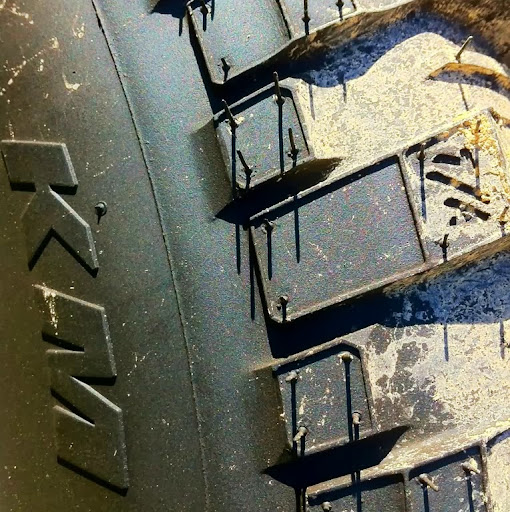James Ross Fortner
age ~62
from College Place, WA
- Also known as:
-
- James R Fortner
- James L Fortner
- Jim Fortner
- Phone and address:
- 1141 SE Sentry Dr, College Place, WA 99324
James Fortner Phones & Addresses
- 1141 SE Sentry Dr, College Place, WA 99324
- La Pine, OR
- Hood River, OR
- Grants Pass, OR
- Portland, OR
- La Grande, OR
- PO Box 16293, Portland, OR 97292
Work
-
Position:Service Occupations
Us Patents
-
Methods And Apparatus For Flow Isolation And Focusing During Electroplating
view source -
US Patent:20190055665, Feb 21, 2019
-
Filed:Aug 10, 2018
-
Appl. No.:16/101291
-
Inventors:- Fremont CA, US
Bryan L. Buckalew - Tualatin OR, US
Aaron Berke - Portland OR, US
James Isaac Fortner - Newberg OR, US
Justin Oberst - Beaverton OR, US
Steven T. Mayer - Aurora OR, US
Robert Rash - West Linn OR, US -
International Classification:C25D 17/00
C25D 7/12 -
Abstract:Various embodiments described herein relate to methods and apparatus for electroplating material onto a semiconductor substrate. In some cases, one or more membrane may be provided in contact with an ionically resistive element to minimize the degree to which electrolyte passes backwards from a cross flow manifold, through the ionically resistive element, and into an ionically resistive element manifold during electroplating. The membrane may be designed to route electrolyte in a desired manner in some embodiments. In these or other cases, one or more baffles may be provided in the ionically resistive element manifold to reduce the degree to which electrolyte is able to bypass the cross flow manifold by flowing back through the ionically resistive element and across the electroplating cell within the ionically resistive element manifold. These techniques can be used to improve the uniformity of electroplating results.
-
Electroplating Apparatus And Methods Utilizing Independent Control Of Impinging Electrolyte
view source -
US Patent:20180258546, Sep 13, 2018
-
Filed:Mar 9, 2017
-
Appl. No.:15/455011
-
Inventors:- Fremont CA, US
Bryan L. Buckalew - Tualatin OR, US
Lee Peng Chua - Beaverton OR, US
Robert Rash - West Linn OR, US
James Isaac Fortner - Newberg OR, US
Aaron Berke - Portland OR, US -
International Classification:C25D 5/02
C25D 17/00
C25D 17/06
C25D 21/12 -
Abstract:Methods and apparatus for electroplating substrates are described herein. In some cases, an ionically resistive element is positioned near the substrate, creating a cross flow manifold between the ionically resistive element and the substrate. During plating, fluid may enter the cross flow manifold upward through the channels in the ionically resistive element, and (optionally) laterally through a cross flow side inlet. The flow paths combine in the cross flow manifold and exit at the cross flow outlet, which may be positioned opposite the cross flow inlet. In some embodiments, the ionically resistive element may include two or more flow regions, where the flow through each flow region is independently controllable. In these or other embodiments, an electrolyte jet may be included to flow additional electrolyte toward the substrate at a particular radial location or locations during plating. In some embodiments, the ionically resistive element may be omitted.
-
Edge Flow Element For Electroplating Apparatus
view source -
US Patent:20170058417, Mar 2, 2017
-
Filed:Oct 27, 2015
-
Appl. No.:14/924124
-
Inventors:- Fremont CA, US
Bryan L. Buckalew - Tualatin OR, US
Steven T. Mayer - Aurora OR, US
Robert Rash - West Linn OR, US
James Isaac Fortner - Newberg OR, US
Lee Peng Chua - Beaverton OR, US -
International Classification:C25D 5/08
C25D 17/00 -
Abstract:The embodiments herein relate to methods and apparatus for electroplating one or more materials onto a substrate. In many cases the material is a metal and the substrate is a semiconductor wafer, though the embodiments are no so limited. Typically, the embodiments herein utilize a channeled plate positioned near the substrate, creating a cross flow manifold defined on the bottom by the channeled plate, on the top by the substrate, and on the sides by a cross flow confinement ring. Also typically present is an edge flow element configured to direct electrolyte into a corner formed between the substrate and substrate holder. During plating, fluid enters the cross flow manifold both upward through the channels in the channeled plate, and laterally through a cross flow side inlet positioned on one side of the cross flow confinement ring. The flow paths combine in the cross flow manifold and exit at the cross flow exit, which is positioned opposite the cross flow inlet. These combined flow paths and the edge flow element result in improved plating uniformity, especially at the periphery of the substrate.
-
Apparatus And Method For Dynamic Control Of Plated Uniformity With The Use Of Remote Electric Current
view source -
US Patent:20160215408, Jul 28, 2016
-
Filed:Jan 22, 2015
-
Appl. No.:14/602910
-
Inventors:- Fremont CA, US
Bryan L. Buckalew - Tualatin OR, US
Steven T. Mayer - Lake Oswego OR, US
Lee Peng Chua - Beaverton OR, US
Aaron Berke - Portland OR, US
James Isaac Fortner - Newberg OR, US
Robert Rash - West Linn OR, US -
Assignee:LAM RESEARCH CORPORATION - Fremont CA
-
International Classification:C25D 5/04
C25D 17/00 -
Abstract:An apparatus for electroplating metal on a substrate while controlling plating uniformity includes in one aspect: a plating chamber having anolyte and catholyte compartments separated by a membrane; a primary anode positioned in the anolyte compartment; an ionically resistive ionically permeable element positioned between the membrane and a substrate in the catholyte compartment; and a secondary electrode configured to donate and/or divert plating current to and/or from the substrate, wherein the secondary electrode is positioned such that the donated and/or diverted plating current does not cross the membrane separating the anolyte and catholyte compartments, but passes through the ionically resistive ionically permeable element. In some embodiments the secondary electrode is an azimuthally symmetrical anode (e.g., a ring positioned in a separate compartment around the periphery of the plating chamber) that can be dynamically controlled during electroplating.
-
Methods And Apparatuses For Dynamically Tunable Wafer-Edge Electroplating
view source -
US Patent:20160177466, Jun 23, 2016
-
Filed:Dec 19, 2014
-
Appl. No.:14/578068
-
Inventors:- Fremont CA, US
Bryan L. Buckalew - Tualatin OR, US
Aaron Berke - Portland OR, US
James Isaac Fortner - Newberg OR, US
Robert Rash - West Linn OR, US -
International Classification:C25D 17/00
C25D 7/12 -
Abstract:Disclosed herein are methods of electroplating which may include placing a substrate, an anode, and an electroplating solution in an electroplating cell such that the substrate and the anode are located on opposite sides of a fluidically-permeable plate, setting the configuration of one or more seals which, when in their sealing configuration, substantially seal pores of the fluidically-permeable plate, and applying an electrical potential between the anode and the first substrate sufficient to cause electroplating on the first substrate such that the rate of electroplating in an edge region of the first substrate is affected by the configuration of the one or more seals. Also disclosed herein are apparatuses for electroplating which may include one or more seals for substantially sealing a subset of the pores in a fluidically-permeable plate whose sealing configuration affects a rate of electroplating in an edge region of the substrate.
Name / Title
Company / Classification
Phones & Addresses
HELPING HANDS MINISTRY INC
President, Director
Premium Trucking, Inc
Resumes

James R Fortner
view source
James Fortner
view source
James Fortner
view source
James Fortner
view source
James Fortner
view source
James Fortner
view source
James Fortner
view source
James Fortner
view sourceLocation:
United States
Youtube
Googleplus

James Fortner

James Fortner

James Fortner

James Fortner

James Fortner

James Fortner

James Fortner

James Fortner
Flickr

James Fortner
view source
James Fortner
view source
James Wesley Fortner
view source
Craig James Fortner
view source
James Clifford Fortner
view source
James Fortner
view source
James Keith Fortner
view source
James P. Fortner
view sourceMyspace
Classmates

James Fortner
view sourceSchools:
Chesapeake High School Pasadena MD 1980-1984
Community:
John Fogle

James W. Fortner
view sourceSchools:
Byars-Hall High School Covington TN 1946-1950
Community:
Pam Townsend, Gene Harkness, Martha Smith

James Fortner
view sourceSchools:
Bryan Elementary School Plant City FL 1990-1993, Cork Elementary School Plant City FL 1993-1996, Grace Christian High School Valrico FL 1996-2002
Community:
Adoracion Valentin, Annette Wright, Lewis Abele, Monica Avis

James Fortner
view sourceSchools:
Thomas Street Elementary School Tupelo MS 1969-1973, Church Street Elementary School Tupelo MS 1973-1973
Community:
Sherri Threadgill, Paula Cooper, Joan Yarborough

James Fortner
view sourceSchools:
Cardinal Dougherty High School Buffalo NY 1959-1962
Community:
Louis Marconi, Norman Peter

James Fortner
view sourceSchools:
Mahanoy City High School Mahanoy City PA 1939-1943
Community:
Joseph Marshall, Clyde Marsteller, Peggy Hughes

James Fortner
view sourceSchools:
Harmony Grove High School Benton AR 1990-1994
Community:
Melissa Tedford, Melanie Holmes, Greg Upperman

James Fortner, Vigor High...
view sourceGet Report for James Ross Fortner from College Place, WA, age ~62



















